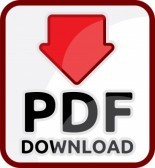Yu. P. Sukhanovskiy, V. A. Vytovtov, A. V. Prushchik, Yu. A. Solovieva, S. I. Sanzharova
All-Russian Research Institute of Arable Farming and Soil Erosion Control, 305021, Kursk, K. Marx st.,
Under consideration is the possible assessment of the soil infiltration capacity by using a portable rain simulator to irrigate a small area without the rill erosion development. To assess the soil infiltration capacity, an equation has been earlier suggested including the erosion index of rain AI to be a criterion of similarity. The equation was verified for natural rainfall (in catchments and runoff plots) as well as for artificial rainfall (in runoff plots
Keywords: natural and artificial rainfalls, criterion of similarity, infiltration, runoff plots, chernozem.
REFERENCES
- Vytovtov V.A., Sukhanovskii Yu.P., Pruschik A.V., Sanzharova S.I. Laboratory and field rainfall simulator. RF Patent number 2417578, 2011.
- Vytovtov V.A., Sukhanovskii Yu.P., Sanzharova S.I., Pruschik A.V., Solovyov YA Portable laboratory and field rainfall simulator. RF Patent number 2519789, 2014.
- Sukhanovskii Yu.P. Probabilistic Approach to the Calculation of Soil Erosion Loss, Eurasian Soil Science, 2013, Vol. 46(4), pp. 431–437. DOI: 10.1134/S1064229313040133.
- Sukhanovskii Yu.P. The dependence of the infiltration rate on the rain erosivity index, Eurasian Soil Science, 2003a, Vol. 36(10), pp. 1114–1123.
- Sukhanovskii Yu.P.Modification of a rainfall simulation procedure at runoff plots for soil erosion investigation, Eurasian Soil Science, 2007,Vol. 40(2), pp. 195–202.
- Sukhanovskii Yu.P., Ollesch G., Meissner R., Rode M., Khan K.Yu., Volokitin M.P., Son B.K. Applicability of the Universal Soil Loss Equation for European Russia, Eurasian Soil Science, 2003b, Vol. 36(6), pp. 658–663.
- Sukhanovskii Y.P., Ollesh G., Khan K.Y., Meisner R. A new index for rainfall erosivity on a physical basis, J. Plant Nutrition Soil Science, 2002, Vol. 165, pp. 51–57.
- Wischmeier W.H., Smith D.D. Predicting rainfall erosion losses, Agricultural handbook, No. 537. Washington. 1978. 65 р.
- Young R.A., Onstad C.A., Bosch D.D., Anderson W.P. AGNPS, Agricultural Non-Point-Source Pollution Model. A Watershed Analysis Tool. U.S. Dept. of Agr. Conservation Research, Report 35, 1987, 80 p.
- Zingg A.W. Degree and length of land slopes as it affect soil loss in runoff, J. of Agric. Engineers, 1940. V. 21(2), pp. 59–64.
